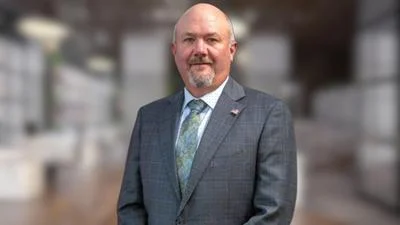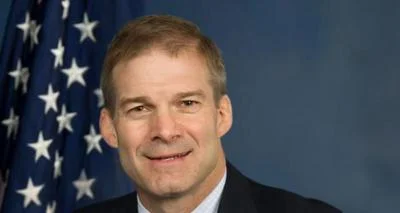The Congressional Record is a unique source of public documentation. It started in 1873, documenting nearly all the major and minor policies being discussed and debated.
“STATEMENTS ON INTRODUCED BILLS AND JOINT RESOLUTIONS” mentioning the U.S. Dept. of Commerce was published in the Senate section on pages S11744-S11746 on Oct. 21, 2005.
The publication is reproduced in full below:
STATEMENTS ON INTRODUCED BILLS AND JOINT RESOLUTIONS
By Mr. DODD (for himself and Mr. Smith):
S. 1906. A bill to amend the Internal Revenue Code of 1986 to exclude property tax rebates and other benefits provided to volunteer firefighters, search and rescue personnel, and emergency medical responders from income and employment taxes and wage withholding; to the Committee on Finance.
Mr. DODD. Mr. President, I am pleased to rise today with my colleague Senator Smith to introduce bipartisan legislation to improve important tax relief to volunteer firefighters and emergency first responders. Congressman John Larson of Connecticut has introduced similar legislation in the House of Representatives.
Seventy-five percent of firefighters and emergency first responders in our country today are volunteers. Statistics show that the number of volunteer firefighters and emergency first responders has declined in past years. Since 1983, the number of volunteer firefighters and emergency first responders has declined anywhere between 5 and 10 percent. Meanwhile, the number of emergency calls made to these volunteer services has increased sharply.
Many municipalities across the country, including those within the State of Connecticut, offer stipends and property tax abatements to volunteer firefighters, search and rescue personnel, emergency medical technicians, paramedics and ambulance drivers. These incentives have helped local fire departments and emergency first responder services recruit and retain volunteers.
In 2002, the Internal Revenue Service, IRS, ruled that property tax abatements to volunteers should be treated as wages and income. This ruling significantly diminished the net value of tax abatements for volunteer firefighters and emergency first responders.
The legislation that Senator Smith and I are introducing amends the Internal Revenue Code to exclude property tax abatements and stipends for volunteer firefighters and emergency first responders from the definition of income and wages. This bill would allow State and municipal governments to continue providing these incentives to their volunteer fighters and emergency first responders without any adverse federal tax implications.
I have long believed that our country should do more to encourage Americans to volunteer in their communities. A modest tax break is not a large repayment for the great services that volunteer firefighters and emergency first responders provide to our communities. They literally risk their lives daily for others. The least we can do is allow States and municipalities to offer these modest incentives to serve.
The current IRS rule--while on one level understandable--nevertheless complicates the good intentions and creative efforts of many states and municipalities. If our State and municipal governments are willing to forgo their local tax revenues in order to ensure that they have enough volunteer firefighters and emergency first responders to protect their communities, then our country should in my view support those State and local efforts. In so doing, our country will be acting to encourage and award volunteers.
I hope that our colleagues will join us in supporting this bipartisan legislation so that our national government can join with State and local governments to design and implement recruiting and retention initiatives that benefit not only volunteer firefighters and emergency first responders, but also the communities they protect.
I ask unanimous consent that the text of the bill be printed in the Record.
There being no objection, the bill was ordered to be printed in the Record, as follows:
S. 1906
Be it enacted by the Senate and House of Representatives of the United States of America in Congress assembled,
SECTION 1. EXCLUSION OF PROPERTY TAX REBATES AND OTHER
BENEFITS PROVIDED TO VOLUNTEER FIREFIGHTERS,
SEARCH AND RESCUE PERSONNEL, AND EMERGENCY
MEDICAL RESPONDERS FROM INCOME AND EMPLOYMENT
TAXES AND WAGE WITHHOLDING.
(a) Exclusion From Gross Income.--
(1) In general.--Part III of subchapter B of chapter 1 of the Internal Revenue Code of 1986 (relating to items specifically excluded from gross income) is amended by redesignating section 140 as section 140A and by inserting after section 139 the following new section:
``SEC. 140. PROPERTY TAX REBATES AND OTHER BENEFITS PROVIDED
TO VOLUNTEER FIREFIGHTERS, SEARCH AND RESCUE
PERSONNEL, AND EMERGENCY MEDICAL RESPONDERS.
``(a) Exclusion.--Gross income shall not include a qualified property tax rebate or other benefit.
``(b) Qualified Property Tax Rebate or Other Benefit.--For purposes of subsection (a)--
``(1) In general.--The term `qualified property tax rebate or other benefit' means a rebate of real or personal property taxes, or any other benefit, provided by a State or political subdivision on account of services performed as a member of a qualified volunteer emergency response organization.
``(2) Qualified volunteer emergency response organization.--The term `qualified volunteer emergency response organization' means any volunteer organization--
``(A) which is organized and operated to provide firefighting, search and rescue, or emergency medical services for persons in the State or political subdivision, as the case may be, and
``(B) which is required (by written agreement) by the State or political subdivision to furnish firefighting, search and rescue, or emergency medical services in such State or political subdivision.''.
(2) Clerical amendment.--The table of sections for such part is amended by striking the last item and inserting the following new items:
``Sec. 140. Property tax rebates and other benefits provided to volunteer firefighters, search and rescue personnel, and emergency medical responders.
``Sec. 140A. Cross references to other Acts.''.
(b) Exclusion From Employment Taxes.--
(1) Social security taxes.--
(A) Section 3121(a) of the Internal Revenue Code of 1986
(relating to definition of wages) is amended by striking
``or'' at the end of paragraph (21), by striking the period at the end of paragraph (22) and inserting ``; or'', and by inserting after paragraph (22) the following new paragraph:
``(23) any qualified property tax rebate or other benefit
(as defined in section 140(b)).''.
(B) Section 209(a) of the Social Security Act is amended by striking ``or'' at the end of paragraph (18), by striking the period at the end of paragraph (19) and inserting ``; or'', and by inserting after paragraph (19) the following new paragraph:
``(20) Any qualified property tax rebate or other benefit
(as defined in section 140(b) of the Internal Revenue Code of 1986).''.
(2) Unemployment taxes.--Section 3306(b) of the Internal Revenue Code of 1986 (relating to definition of wages) is amended by striking ``or'' at the end of paragraph (18), by striking the period at the end of paragraph (19) and inserting ``; or'', and by inserting after paragraph (19) the following new paragraph:
``(20) any qualified property tax rebate or other benefit
(as defined in section 140(b).''.
(c) Wage Withholding.--Section 3401(a) of the Internal Revenue Code of 1986 (defining wages) is amended by striking
``or'' at the end of paragraph (21), by striking the period at the end of paragraph (22) and inserting ``; or'', and by inserting after paragraph (22) the following new paragraph:
``(23) for any qualified property tax rebate or other benefit (as defined in section 140(b).''.
(d) Effective Date.--The amendments made by this section shall apply to taxable years beginning after the date of the enactment of this Act.
______
By Mr. SMITH (for himself and Ms. Cantwell):
S. 1908. A bill to authorize the Under Secretary of Technology of the Department of Commerce to award grants to establish up to eight Nanoscience to Commercialization Institutes throughout the United States to develop commercial applications for nanotechnology; to the Committee on Commerce, Science, and Transportation.
Mr. SMITH. Mr. President, I rise today with Senator Cantwell to introduce the Nanoscience to Commercialization Institutes Act of 2005.
Still in its infancy, nanotechnology is an exciting technology with a bright future and the potential to have a significant impact on the economy, global competitiveness and the quality of life for our citizens.
The advent of nanotechnology is creating opportunities in any array of industries with applications ranging from improving the performance of sports equipment used in recreation activities to life-saving medical applications used to combat deadly diseases such as cancer.
Many promising technological advances have already begun to take shape in the world of micro- and nanotechnology and countless more potential future applications exist in fields such as medicine, electronics, energy to name a few.
However, many times innovative research becomes victim of the
``Valley of Death'' by failing to advance from the research labs to application in commercial products and services.
My bill will establish up to eight Nanoscience to Commercialization Institutes across the country, each focusing on a specific field of expertise including areas such as energy, electronics, agriculture, medical, textiles and transportation with the purpose of developing and bridging research to the marketplace.
My bill is aimed at narrowing this so-called ``Valley of Death,'' by focusing on bringing research to commercialization. To reach this objective, my bill contains provisions requiring these institutes to partner with private sector entities with experience in micro- and nanotechnology and for each institute to develop and maintain business plans.
My bill will create additional avenues for entities that are engaged in micro- and nanotechnologies to develop research for application in commercial products and services that will ultimately contribute to sustained economic development, an improved quality of living and increased U.S. global competitiveness.
The competitive landscape of nanotechnology is global in nature. Other countries, such as Japan and China are making tremendous investments and advances in various specialties of nanotechnology to gain competitive advantages. It is critical the U.S. demonstrate its global leadership role by further advancing opportunities to advance micro- and nanotechnology to commercial applications.
The future of nanotechnology is a bright future and its potential boundless. The legislation that I am introducing today with Senator Cantwell supports and encourages the advancement of this exciting technology. I urge my colleagues to support the Nanoscience to Commercialization Institutes Act of 2005.
I ask unanimous consent that the text of the bill be printed in the Record.
There being no objection, the bill was ordered to be printed in the Record, as follows:
S. 1908
Be it enacted by the Senate and House of Representatives of the United States of America in Congress assembled,
SECTION 1. SHORT TITLE.
This Act may be cited as the ``Nanoscience to Commercialization Institutes Act of 2005''.
SEC. 2. NANOSCIENCE TO COMMERCIALIZATION INSTITUTES.
(a) Grants Authorized.--
(1) In general.--The Under Secretary of Technology of the Department of Commerce (referred to in this Act as the
``Under Secretary'') is authorized to award grants to eligible entities to establish up to 8 Nanoscience to Commercialization Institutes (referred to in this Act as
``Institutes'') throughout the United States to assist in the commercialization of nanotechnology.
(2) Maximum amount.--The Under Secretary shall not award a grant under this section in an amount which exceeds
$1,500,000 for any year of the grant period.
(3) Duration.--The Under Secretary shall award grants under this section for a period not to exceed 3 years.
(4) Location.--The Under Secretary shall ensure that each Institute is located at either a public university or Federal laboratory.
(b) Use of Funds.--
(1) In general.--Grants awarded pursuant to subsection (a) shall be used to establish at least 1 Institute in each of the following areas of nanotechnology or microtechnology:
(A) Energy, including clean coal liquification, gasification, and filtration, nuclear energy, biofuels, or fuel processing.
(B) Printable electronics, including electronic displays.
(C) Medical, including diagnostics, imaging, or medical devices.
(D) Transportation, including materials or coatings.
(E) Textiles, including heat resistance, waterproofing, insulation, or fireproofing.
(F) Agriculture.
(2) Limitation.--Not more than 20 percent of each grant award may be used for administrative expenses or other overhead costs.
(3) Matching requirement.--For-profit manufacturing companies conducting research and development in micro- and nanotechnologies shall provide--
(A) not less than 20 percent of the funding for each Institute; and
(B) in addition to the funding under subparagraph (A), in-kind contributions equal to not less than 15 percent of the operating costs of the Institute.
(c) Application.--
(1) In general.--Each entity desiring a grant under this section shall submit an application to the Under Secretary at such time, in such manner, and containing such information as the Under Secretary may reasonably require.
(2) Collaboration.--The application submitted under paragraph (1) shall include a business plan that--
(A) describes how each grant recipient will collaborate with the private sector entities that will contribute expertise and matching funds; and
(B) includes goals for the first year of the grant period.
(3) Ineligible entities.--Any institution of higher education that has a federally funded nanotechnology center or is the primary lead of a nanotechnology center is not eligible for a grant under this section.
(4) Peer review committee.--The Under Secretary shall establish a peer review committee, consisting of representatives from the micro- and nanotechnology industry and early stage venture capital firms, to review the goals and progress made by each Institute during the grant period.
(5) Renewal of grants.--
(A) Each entity that receives an initial 1-year grant under this section shall, as a condition of continued grant funding, submit a report, not later than 1 year after the beginning of the grant period and annually for the next 2 years, to the peer review committee established under paragraph (4).
(B) The report submitted under subparagraph (A) shall describe the Institute's accomplishments during the preceding year and the Institute's goals for the subsequent year.
SEC. 3. AUTHORIZATION OF APPROPRIATIONS.
There are authorized to be appropriated $24,000,000 during the 3-year period beginning on the date of enactment of this Act to carry out the provisions of this Act.
____________________








